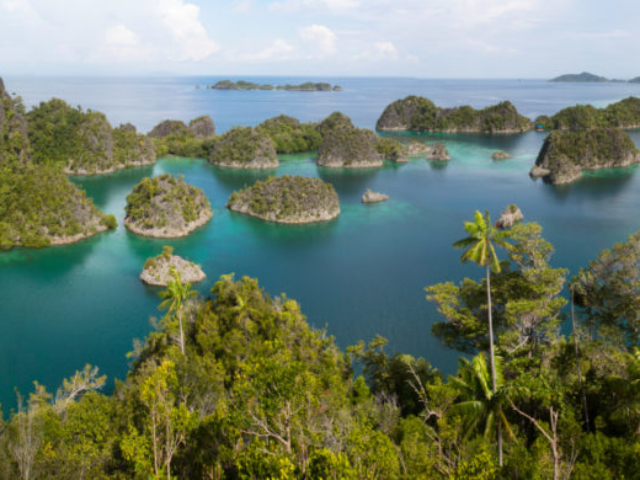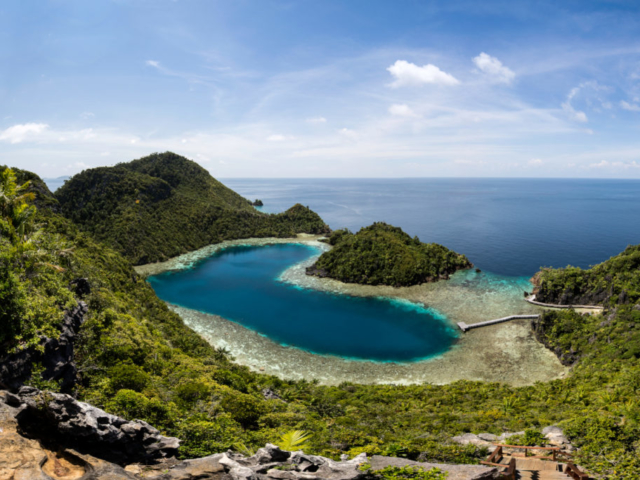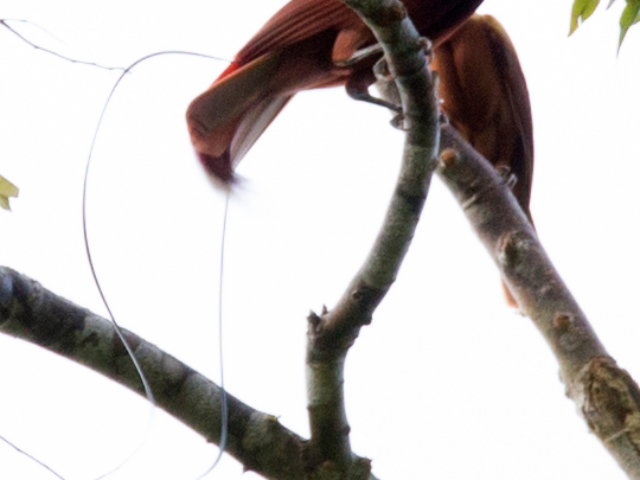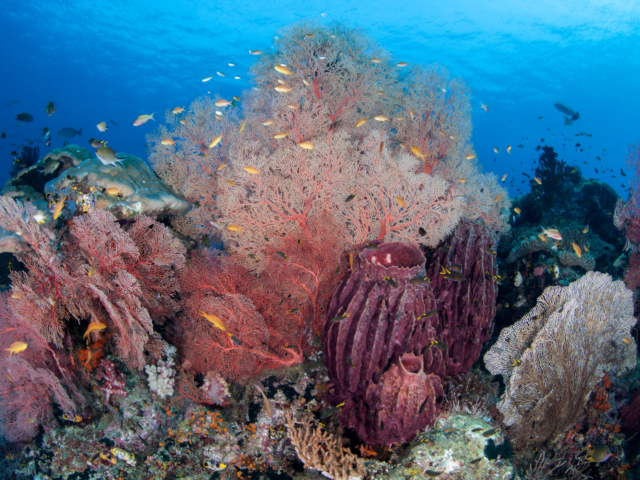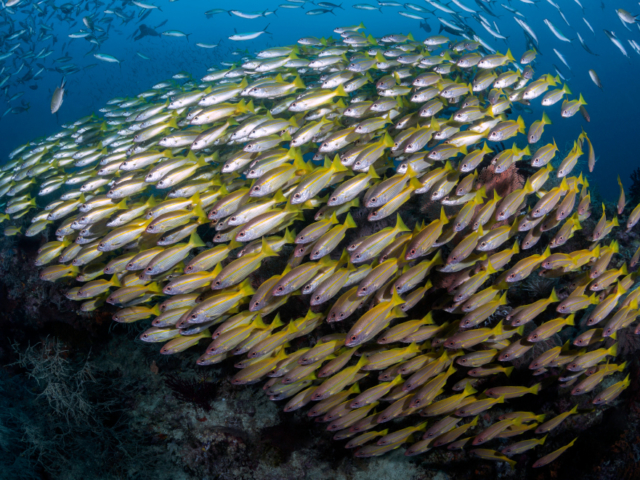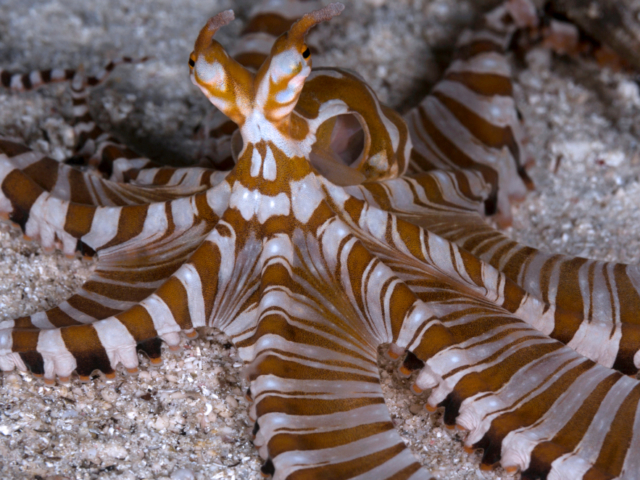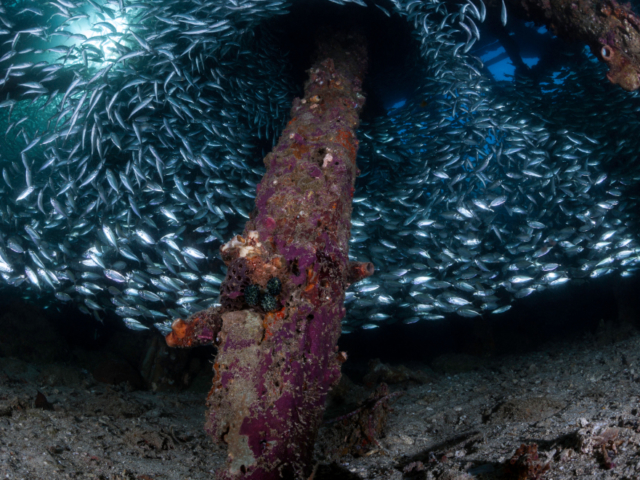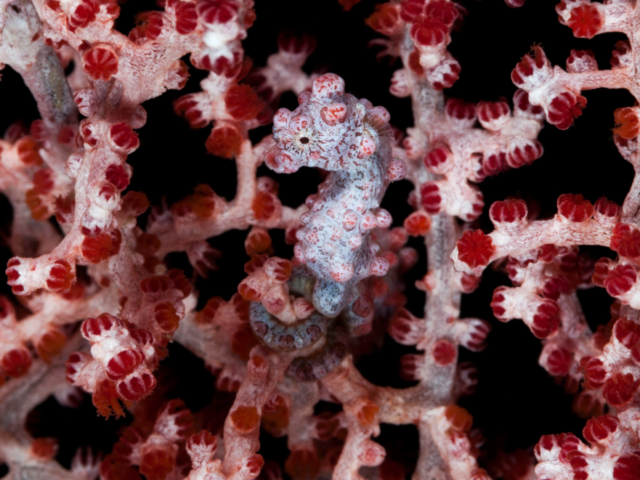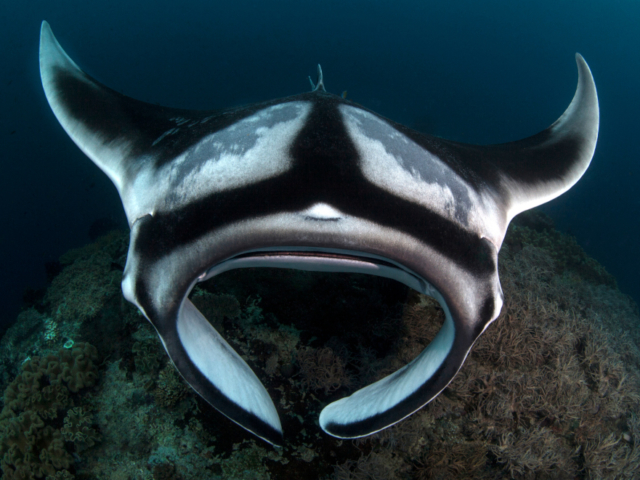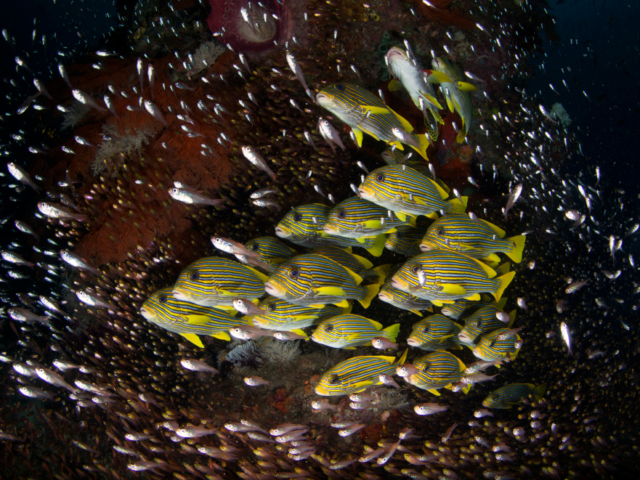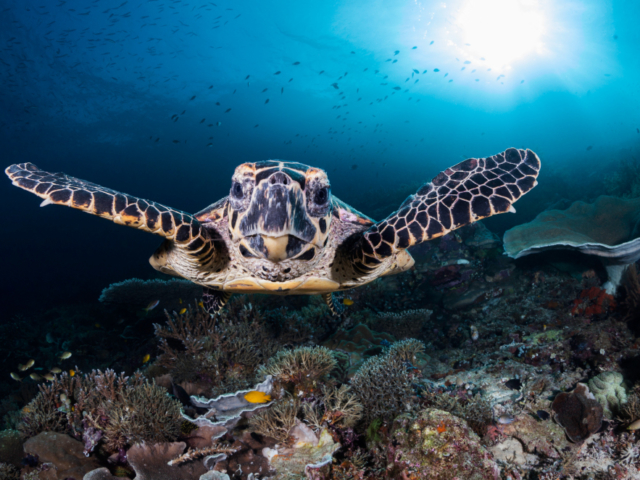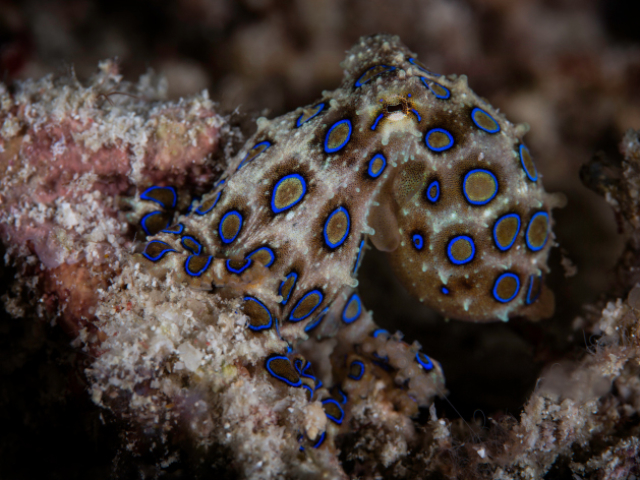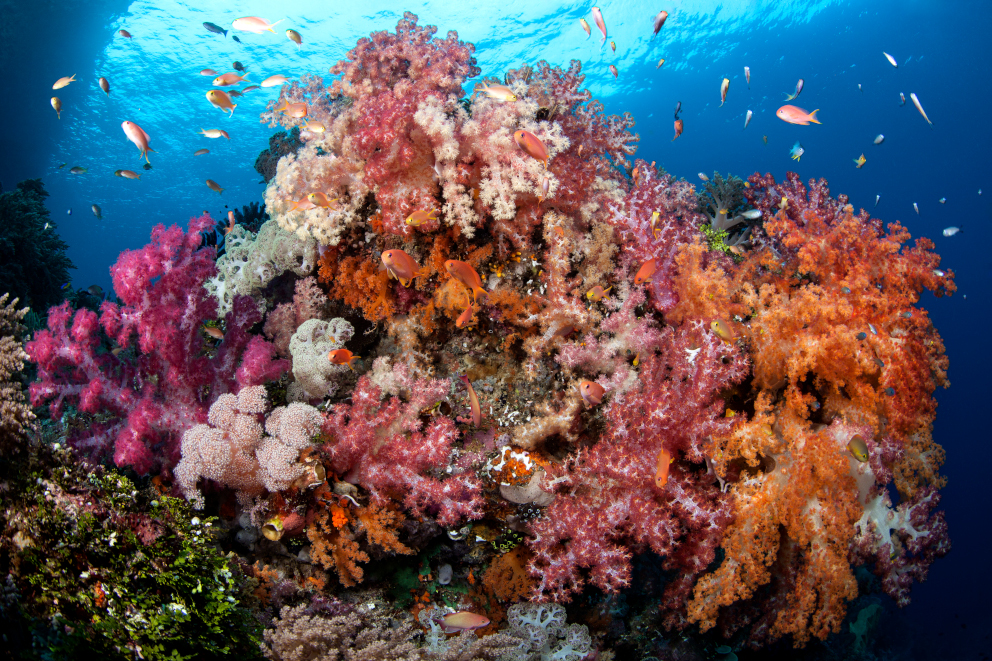
Raja Ampat Liveaboard Diving
Coralia Liveaboard has different length cruises, taking in all the various areas that are encompassed within the amazing destination of Raja Ampat.
Raja Ampat is right in the centre of the Coral Triangle. According to Conservation International, marine surveys suggest that the marine life diversity in the Raja Ampat area is the highest recorded on earth.
Raja Ampat means ‘Four Kings’. In an archipelago of over 1,500 small islands there are four main islands or ‘kings’– Waigeo, Salawati, Batanta, Misool.
Fascinating Facts about Raja Ampat
- 600+ species of coral are found in Raja Ampat – the entire Caribbean Sea has only 58 species
- 1,669 species of fish have been recorded to date (December 2019)
- 374 fish species were identified during one 90-minute dive at Cape Kri in Dampier Strait
- 42 fish species are native to the region
- 17 °C temperature range – the corals in Raja Ampat are regularly subjected to variations in temperatures from 19 to 36 °C (66-97 °F). The coral seems to be naturally adapted to massive fluctuations in temperature than are far higher than the ones predicted by climatologists over the next 50 years.
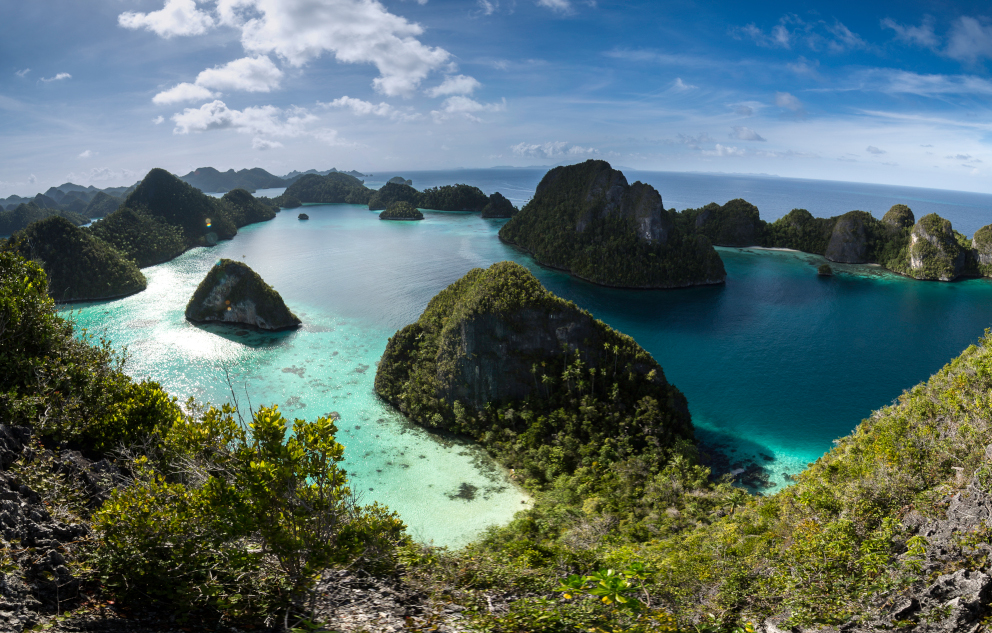
Best Places to Dive in Raja Ampat
Raja Ampat is right in the heart of the Coral Triangle and has over 1,500 islands. Many scientists believe Raja Ampat has the most coral and fish diversity in the world!
Central Raja Ampat
Waigeo is a huge island and to the south is the famous Dampier Strait. This area offers a vast selection of world-class and adrenaline-packed dive sites, such as Cape Kri, Chicken Reef, Sardine Reef, Mioskon and Blue Magic. Our guides can take you to places where the current meets the reef head on, where you can witness predatory fish like blacktip, whitetip and grey reef sharks, giant trevally, Spanish mackerel and dogtooth tuna hunting huge schools of smaller fish like fusiliers and bigeye jacks. On top of the abundant fish life, Central Raja Ampat offers fantastic macro dives, with chances to spot different species of pygmy seahorses, common seahorses, cuttlefish and octopuses.
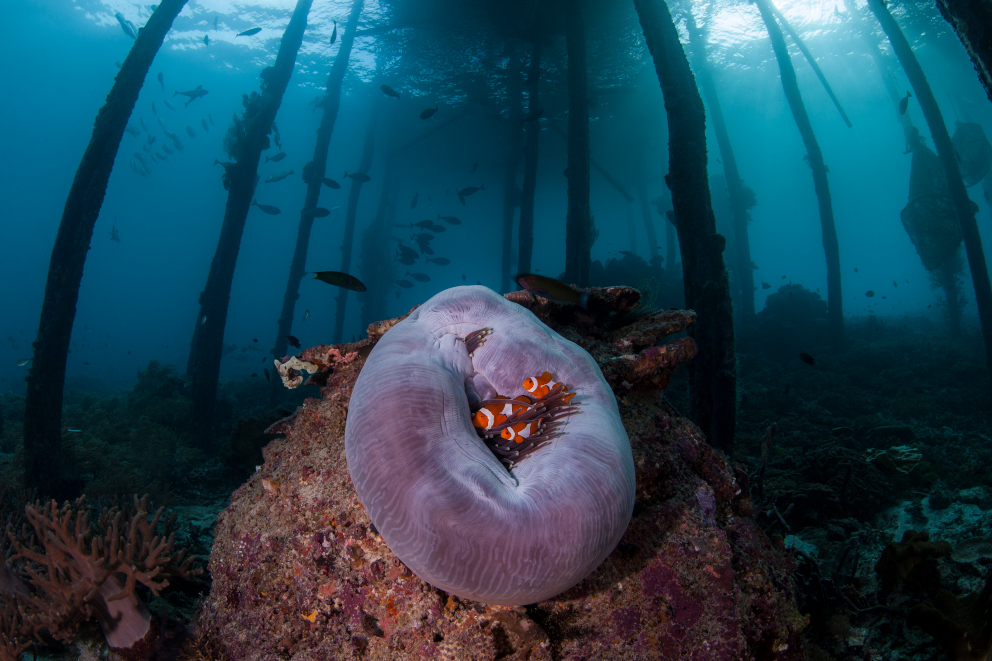
At the other end of the Dampier Strait there’s dive sites around the islands of Kri, Mansuar and Arborek, where we hope to encounter schools of sweetlips, napoleon wrasse, bumphead parrotfish and the endemic tasselled wobbegong shark.
Sawandarek village lies on Mansuar Island and offers a spectacular reef and jetty dive. Here we can witness Papua Explorers’ successful coral restoration project and visit the resident turtles.
Arborek is a well-known jetty and night dive and boasts impressive marine life such as giant clams, schooling batfish and crocodile fish. The well-known manta aggregation sites of Manta Sandy and Manta Ridge are also in this area. For those interested, there might be an opportunity to walk around the village at Sawandarek or Arborek.
Yangeffo Island is situated on the western tip of Gam Island and creates a sheltered bay. This small area has multiple top-notch dive sites. Famous ones like Citrus Ridge and Mayhem always amaze divers with their vibrancy and biodiversity. The area here is probably so abundant due to the surrounding mangroves. Beautiful hard and soft corals grow under and among the roots of the trees. They create a distinctive environment and are home for species like archer fish, cardinal fish and different types of juvenile reef fish. If the tides are right, we may visit this fragile ecosystem, which provides special photo opportunities.
North from Dampier Strait is Penemu. Famous Melissa’s Garden awaits us with its spectacular, healthy and wide-spread hard coral plateau, completely covered in colourful anthias and damsel fish. At Keruo Wall, we can admire large gorgonian sea fans and lovely reef tops. A short hike to Penemu viewpoint offers a spectacular view of the lagoons and its surrounding islands.
North Raja Ampat
Wofoh is an incredibly scenic area with unique dive sites. On one side, we will have the backdrop of Wofoh and Taman Wofoh, two small islands with pristine white-sand beaches, and on the other side we can take in vistas of the forested mountains and valleys of West Waigeo. The dive sites at Wofoh are famous for stunning black coral forests, where schooling fish are on the constant run from larger predatory fish. The walls are interesting with ledges and shallow caverns, where it is not uncommon to find wobbegong sharks.
Beautiful Aljui Bay is famous for its outstanding macro diving and plentiful purple soft corals. There may also an opportunity to take a little tour to visit the pearl farm and learn all about how pearls are grown. During the night dive, it is not unusual to find macro favourites like special octopus and cuttlefish species, colourful nudibranchs and epaulette walking sharks.
World-famous Wayag is in the very north and across the equator in the northern hemisphere. Uninhabited and incredibly picturesque, Wayag Island is an icon of Raja Ampat. Covering a total area of 155,000 hectares, it is known for its beautiful atolls and lagoons. Breathtaking at every turn, in Wayag you will find pristine beaches and the unique Karst islands that resemble mushrooms sprouting from the sea. The fit and adventurous can climb to the top of Mount Pindito for the fantastic views. In the late afternoon, we will go for a scenic lagoon tour in the speedboats. Look for baby manta rays and turtles as we cruise around. At the ranger station, we can look for blacktip reef sharks swimming over the sand in the shallows.
Kawe is back down in the southern hemisphere. Eagle Rock is named after the majestic eagles circling above the small, rocky islands. Underwater, divers can encounter creatures like wobbegong sharks, bamboo sharks, batfish, schooling fusiliers and, if we get lucky, even the occasional manta ray! At Black Rock, soft corals bloom in a variety of colours from the rocky outcrops, amazing us as Raja Ampat’s full abundance comes to life in a most vibrant display. Schooling surgeon fish await us together with sweetlips, whitetip reef sharks and dogtooth tunas on the hunt.
Batanta
Dayang lies on the northwest of Batanta. It is at the entrance to one of Batanta’s many scenic bays, where we might come across wobbegong sharks and get to see great macro life, including ribbon eels, ghost pipefish and unusual nudibranchs. Dayang Island also offers a great chance to encounter manta rays, the gentle giants, at their cleaning stations.
Moving east along the northern coast of Batanta, there are some fantastic drift and pinnacle dives with schooling fish, lots of fusiliers, napoleon wrasse, turtles and reef sharks. For the night, we may head inside a bay to a very special anchor spot. As the sun drops, the surrounding forested hills become alive, and Blyth’s Hornbills emerge to return to their roosting places. After witnessing this spectacle, we can do a great macro night dive on a sandy slope. We will go on a critter hunt, looking for weird and wonderful creatures such as octopus, ghost pipefish, juvenile batfish and juvenile barramundi cods.
Have a read of our blog all about wobbegong sharks here or perhaps you would like to see some fish hunting action in this video.
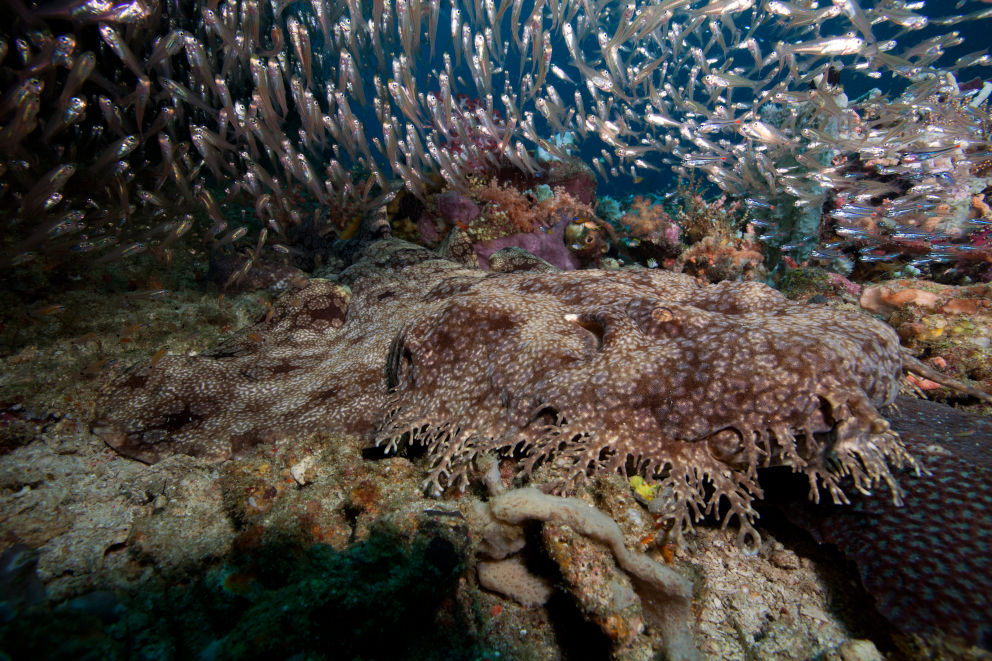
Misool – South Raja Ampat
Misool’s small surrounding islands are a soft-coral paradise and a famous part of Raja Ampat. With its abundance of stunning dive sites and the natural beauty of karst limestone and jungle-clad islands, this area invites us to linger for several days.
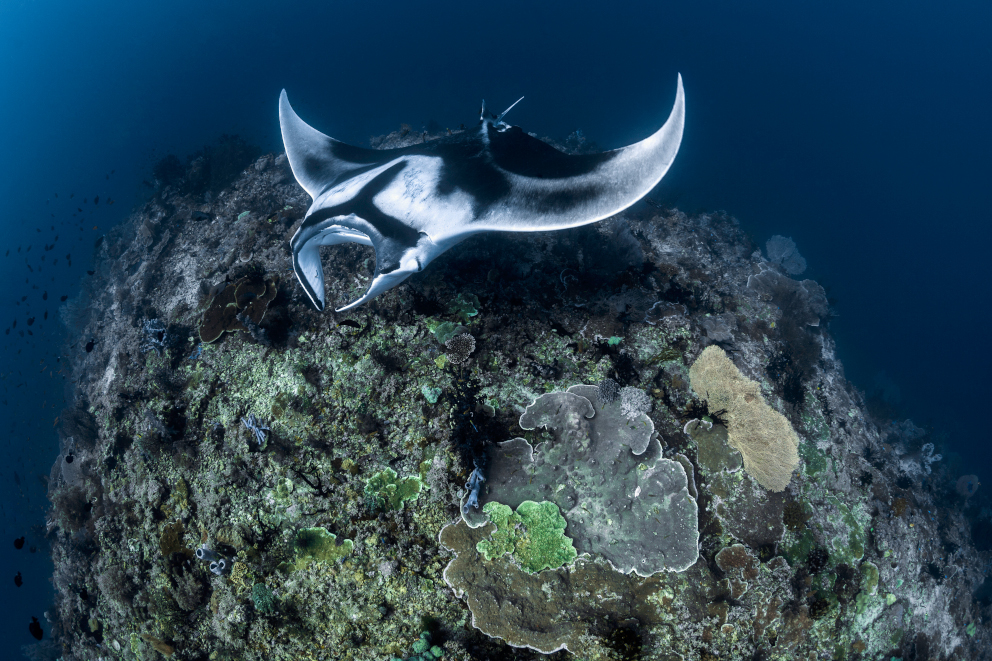
Misool can be divided into many areas, where we can spend the whole day at a selection of amazing dive sites. Daram is in the very east of these islands and has inviting names such as Candy Store, Andiamo and Warna Berwarna (meaning Colourful Colour!). The sea fan forests here have to be seen to be believed!
In the iconic areas of Boo, Fiabecet and Yuliet, we may look through the iconic Boo Windows, with tonnes of fish surrounding us. We might explore fabulous dive sites like Shadow Reef (aka Magic Mountain), Nudibranch Rock, Batu Kecil, Whale Rock, Boo West Corner and Yuliet Kecil. And if we are lucky, we see the majestic giant and/or reef manta rays around here. Admire large coral heads covered in soft corals, maybe spotting the famous Santa Claus pygmy seahorse, while schools of barracudas and batfish might pass by. Our eagle-eyed dive masters will look for the endemic walking shark (epaulette shark) on a night dive at Romeo or Yuliet Besar.
The areas of Sagof, Wagmab and Farondi offer us stunning underwater walls, overhangs and cave structures, plus amazing macro life, such as nudibranchs, flatworms, anemone crabs and all kinds of shrimps. In this area, we have the opportunity to visit the wonderful lagoons – a must-see in Misool. These amazing geological structures come in iconic bee-hive-shaped karst limestone formations and hard-coral colonies at their base. If the tide is high enough, our crew will take you to the secret bay right at the back!
There are also lagoons at Wayilbatan, one of them is the Love Lagoon. The hike up the steep stairs is well worth the view – a blue heart shape. A drift dive through a channel covered in sea fans at Neptune Fan Sea is the perfect place to cool off after the hot walk. Wedding Cake and Barracuda Rock are other stunning dive sites in this area.
Raja Ampat Liveaboard Diving Highlights
- Dive with the schooling fish of Dampier Strait
- See the amazing wobbegong shark
- Dive at Misool’s famous dive sites, completely covered in colourful soft corals
- See both giant manta rays and reef manta rays
- Climb the viewpoint for a view over the lagoon and limestone karsts
- Common sightings – pygmy seahorses, nudibranchs, crocodile fish, turtles, schooling fish, anemone fish, reef sharks
- Special sightings – wobbegong sharks (also a common sighting but they are special so go in this list!), ghost pipefish, frogfish, octopus, manta rays
Best Time to Go
Raja Ampat can be dived all year round! Coralia cruises in Raja Ampat usually from September to May. You can also dive Raja Ampat with our sister resort Papua Explorers.
How to Get There
Coralia’s cruises in Raja Ampat depart from Sorong. Sorong is in West Papua. There are direct flights from Jakarta. The airport code is SOQ for Sorong. Jakarta International Airport is CGK. It is also possible to fly from Bali (DPS) via Jakarta, Makassar (UPG) or Manado (MDC).
Garuda runs flights on some of the above routes. At the time of writing, Garuda offers an extra 23 kg per person for dive gear. Be ready to show your diving certification and that your extra baggage is made up of dive equipment.
At the end of the cruise, you can arrange for a morning or afternoon flight back to Jakarta or Bali. Please remember that if you fly in the morning, then you might be restricted on the number of dives you partake in the day before. Usually, on the last full day on board, we will do two dives in the morning, finishing by around 1 pm.
You can take an international flight into Bali or Jakarta to connect with your domestic flight. We recommend arriving in Bali or Jakarta at least one day before your domestic flight. We also recommend you book your return international flight for one day after the end of the cruise.
Useful Raja Ampat Liveaboard Cruise Information
- All divers and snorkelers can join a Raja Ampat cruise. Raja Ampat is one of the best destinations in the world for snorkeling.
- Transfers to and from the airport are included. From Sorong airport to the harbour it is around a 10 minute drive. You will then be transferred by a short speedboat ride to Coralia.
- Water temperature – it is warm all year round, around 28 to 30 °C (82-86 °F).
- Visibility is usually very good, ranging from 20 to 30 metres (65-100 ft).
- Raja Ampat is part of Indonesia. The currency is Indonesian Rupiah or IDR.
- The official language is Bahasa Indonesia. However, there are over 300 different native languages spoken in Indonesia.
- If you would like to bring gifts for the children of Raja Ampat, we have the opportunity to distribute them during the cruise. Most useful are things like pencils, pencil sharpeners, books, crayons, clothes, hair bands for girls, etc. Please do not bring items wrapped in plastic, as this plastic will not be disposed of appropriately. It is also best not to bring plastic toys or balloons.
- Other on-board options include treks to viewpoints, kayaking, paddleboarding and beach visits.
Visit Raja Ampat with Coralia Liveaboard Indonesia!
Please have a look at Coralia’s cruise schedule to join us on an unforgettable diving adventure.
Also, please feel free to CONTACT US in case you have any questions. We look forward to assisting you.

